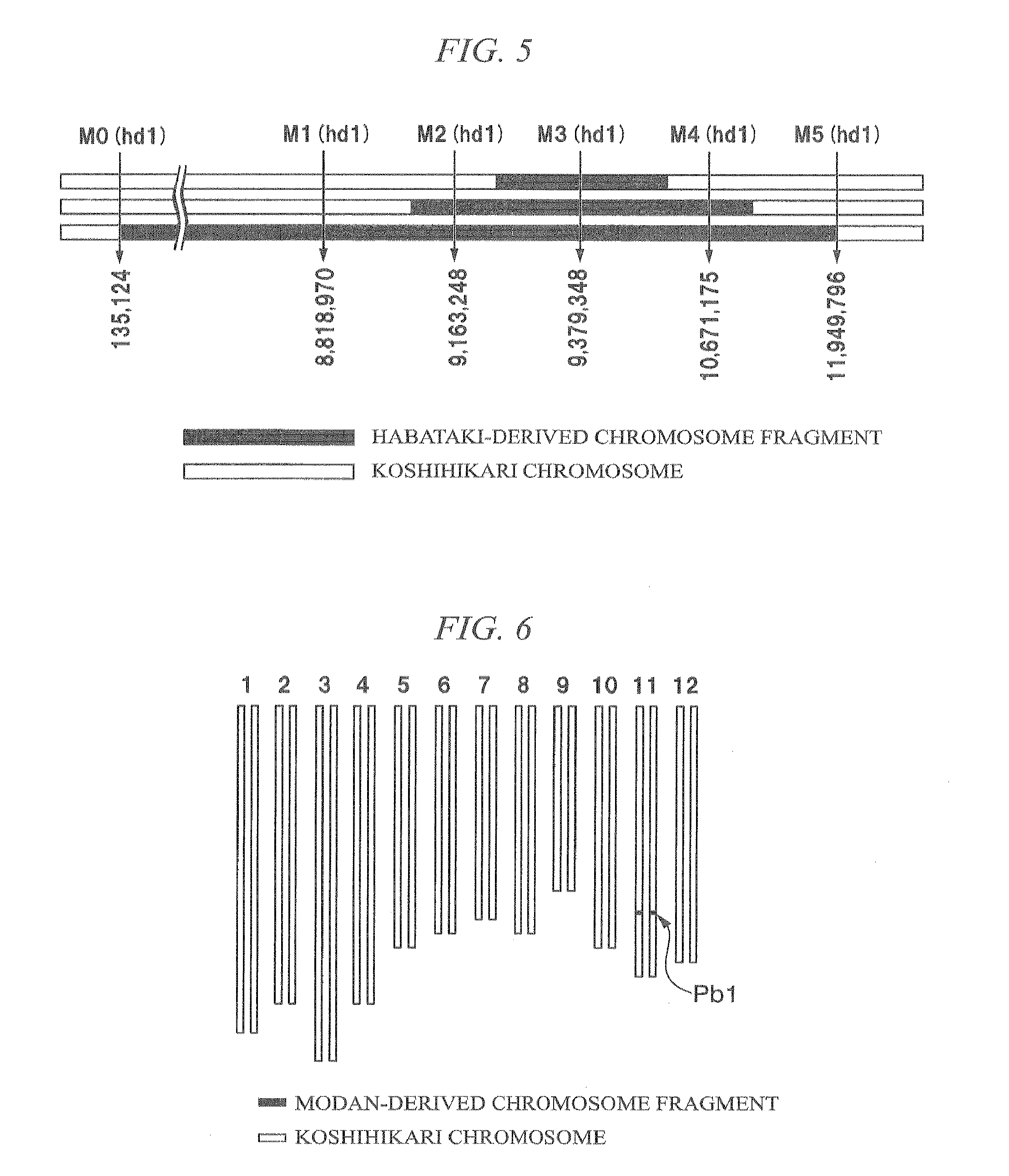Method for producing rice f1 seed, rice f1 seed, and rice male sterile line
a technology of rice f1 and f1 seed, which is applied in the field of rice male sterile line, can solve the problems of low seed production efficiency of koshihikari, frequent problems, and significant deterioration in selection efficiency, and achieve the effect of high selection efficiency
- Summary
- Abstract
- Description
- Claims
- Application Information
AI Technical Summary
Benefits of technology
Problems solved by technology
Method used
Image
Examples
example 1
[0094]
[0095]According to the method described in Patent Document 3, a Modan-derived Pb1-containing near-isogenic line JMT-019 (hereinafter, also referred to as “JMT-019”) was created. More specifically, first, an individual having a desired genome was selected using SP-4234, SP-5290, SP-5384, SP-5569, and SP-4236 among DNA markers described in Table 1.
[0096]Specifically, Oryza sativa L. cultivar Koshihikari was backcrossed five times with Oryza sativa L. cultivar Modan. A seed of the resulting F5 hybrid was further cultivated, and a seedling was grown to such an extent that the seedling could be transplanted to an agricultural field. DNA was extracted from a leaf of each cultivated individual, and one cultivated individual in which SP-4234 and SP-4236 are a homo-chromosome region of an allele derived from Koshihikari, and SP-5290, SP-5384 and SP-5569 are a homo-chromosome region of an allele derived from Modan was selected. This selected cultivated individual is a new cultivar in wh...
PUM
 Login to View More
Login to View More Abstract
Description
Claims
Application Information
 Login to View More
Login to View More - R&D
- Intellectual Property
- Life Sciences
- Materials
- Tech Scout
- Unparalleled Data Quality
- Higher Quality Content
- 60% Fewer Hallucinations
Browse by: Latest US Patents, China's latest patents, Technical Efficacy Thesaurus, Application Domain, Technology Topic, Popular Technical Reports.
© 2025 PatSnap. All rights reserved.Legal|Privacy policy|Modern Slavery Act Transparency Statement|Sitemap|About US| Contact US: help@patsnap.com



